History of Public Relations
Dr. Linda M. Perry |
- Public Opinion
- Power; change:
- Greeks, Roman, England: Magna Carta 1512
- Printing press: 15th century
- Controlled by licensing, censorship, seditious
libel
- 1730s--Seditious Libel
- Juries revolt in England
- Peter Zenger trial in Colonies
- Jury nullification
- Not seditious libel if true
|
| 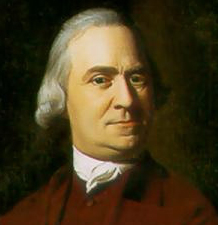
|
- Samuel Adams
- Ridiculed notion of more true: more libelous
- Sustained campaign of seditious libel against
England
|
- Samuel Adams and Revolutionaries
- Used strategies and tactics of public
relations
- Activist organizations
- Sons of Liberty,
- Committees of Correspondence;
- Many channels of communication
- press,
- pulpit,
- platform,
- broadsides,
- pamphlets;
- mass mailings.
- Pseudo events
- create events to meet a need
- Boston Tea Party (1773)
- Orchestrating conflict
- Slogans and symbols:
- Liberty Tree,
- Taxation without representation
is tyranny,
- Join or Die,
- Unite or Die.
- Sustained campaign
- The leak.
|
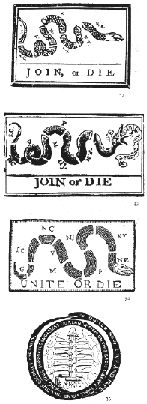
|
|
|
Back to top
- Orchestrating Conflict
- The Boston Massacre (1770)
- Boston Town Meeting quickly issued pamphlet
giving its version of the "massacre."
- Their version reached England first, circulated
by Ben Franklin 11 days before official account
- Get your side of story out first!
- Label used as a propaganda device to martyr victims
to the cause of liberty.
- Whigs used newspapers, sermons and pamphlets to
persuade public.
- Kept before public for five years.
|
- The Federalists Papers
- PR campaign to gain acceptance for the
Constitution.
- Letters to newspapers 1787-88 by Alexander
Hamilton, James Madison and John Jay.
- Pressure group activity
- History's finest public relations job.
- Done with accurate facts and sound
ideas.

|
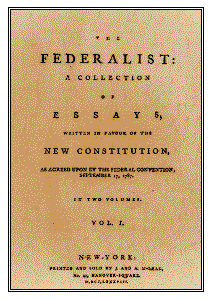
|
|
- Lessons from Antifederalists
- Also had sound ideas.
- Letters in newspapers criticizing new
constitution, urging against ratification.
- Got concession for Bill of Rights.
- Negative name.
- Antifederalists went away.
- Federalists became a party.
|

|
|
|
|
Back to top
- Early Notables
- Political campaigning and organising:
- John Beckley for Thomas Jefferson
- Amos Kendall for Andrew Jackson
- Mathew St. Clair for Davy Crockett
- Press Agentry
- Provocative act to get publicity and draw
attention toward an idea or grievance.
- P.T. Barnum, 1830s.
|
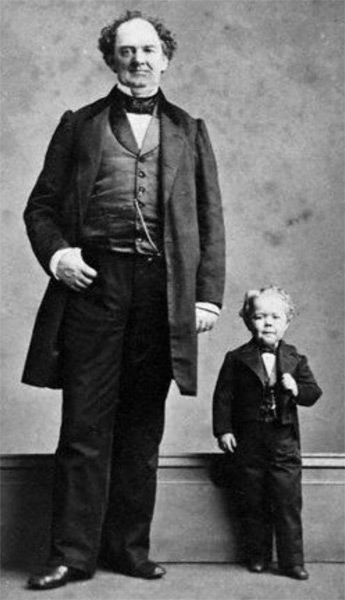
|
|
- Abolitionists movement
- Harriet Beecher Stowe
- Uncle Tom's Cabin
- Fund drive by Jay Cooke for war bonds for the
Union during the Civil War.
- Railroad and land developers to promote land settlement
in West, 1850s -1890s.
- American Association of Railroads first to
use term "public relations," 1897
- 1876 Women's Suffrage
- Elizabeth C. Stanton,
- Susan B. Anthony------>
- Matilda O.Gage
|
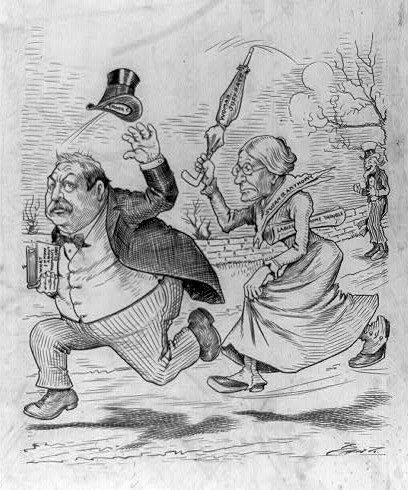 |
Back to top
|
| 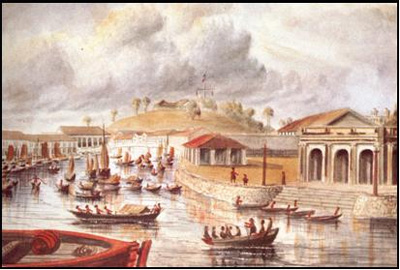
|
- In Singapore
- British established as a trading centre
- Building on existing trading networks and geographical
position
Singapore in 1848
|
|
- Early years
- First corporate press agent department established
by George Westinghouse
- Ernest H. Heinrichs 1889
- AC/DC battle with Edison General Electric
- Business. 1875-1900. Rise of monopolies.
- "Public be damned"
- Leads to protest and reform in early 1900s.
- Seedbed Era (1900-1917)
- Muckrakers take their case to the people
- Reaction to decades of industrial indifference
- Magazines, newspapers via national wire service
- Thomas Lawson: "Frenzied Finance"
- Ida Tarbell: "History of the Standard Oil
Company"
- Upton Sinclair: "The Jungle"
- Journalism countered by defensive publicity
- Resulted in far-reaching reforms, 1900-1912
- Theodore Roosevelt and Woodrow Wilson
- First publicity firm: The Publicity Bureau
- Boston, 1900
- First client: Harvard University
- First press bureau in federal government:
- 1905 by U.S. Forest Service.
- Samuel Insull, Chicago Edison Company.
- Bill stuffers, house publication, 1903.
- First to make PR-related movies.
- AT&T's James Drummond Ellsworth, 1907
- In public interest to accept government regulation
in a natural monopoly.
|
- Ivy Ledbetter Lee
- Profound influence on evolution of press
agentry to public relations
- "Declaration of Principles," first code
of ethics.
- Supply prompt and accurate information,
news
- First to use "handout" (press release)
on large scale.
- Recognized publicity must be supported
by good works--"performance determines the
publicity."
- 1914, appointed adviser to John D. Rockefeller.
|
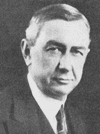
|
|
| 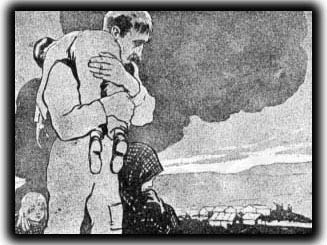
|
- After Ludlow Massacre at Colorado Fuel and
Iron Company plant, April 20, 1914
- Talked to both sides.
- Recommended that management improve
communication with workers and establish
mechanisms to redress their grievances.
- Adviser to operation of business.
- Inward focus:
- Employees important public.
- Got American Tobacco Co. to introduce
profit-sharing.
|
|
|
|
Back to top
- World War I period, 1917-19
- Committee on Public Information, 1917.
- Formed by President Woodrow Wilson
- Chair George Creel, Co-Chair Carl Byoir.
- Mobilized public opinion in support of war.
- Persuasion to buy war bonds, to enlist,
to donate to American Red Cross.
- Followed a major propaganda effort by British
to convince Americans of the rightness of
their side and the evil of the Germans.
|
|
|
- Creel committee very effective.
- Increased U.S. bondholders from 350,000 to
10-million.
- Increased Red Cross:
- from less than 500,000 members to 20-million,
from 372 chapters to 3,864;
- from $200,000 in funds to $400-million.
- Led to belief in magical effects of mass communication&endash;the
legacy of fear.
- Used psychological principles of persuasion.
- Trained many practitioners, including Edward
L. Bernays.
|
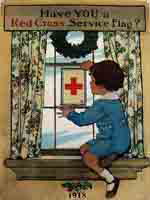
|
|
- In a 1920 memoir, titled How We Advertised America,
Creel wrote that the war was not fought on the battlefield
alone:
- "It was the fight for the minds of men, for the
'conquest of their convictions,' and the battle-line
ran through every home in every country. It was in
this recognition of Public Opinion as a major force
that the Great War differed most essentially from
all previous conflicts…. In all things, from
first to last, without halt or change, it was a plain
publicity proposition….
- "There was no part of the great war machinery that
we did not touch, no medium of appeal that we did
not employ. The printed word, the spoken word, the
motion picture, the telegraph, the cable, the wireless,
the poster, the sign-board --all these were used in
our campaign…."
Back to top
- Booming 20s Era
- War propaganda tactics used to
- promote products,
- win political battles,
- raise money and
- promote technological change.
|
| 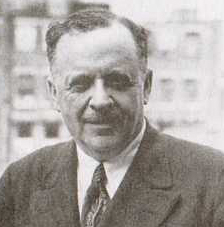
|
- Edward L. Bernays
- Coined the term public relations counsel.
- First book on PR--Crystallizing Public
Opinion,1923.
- First course on PR. at NYU.
- Advanced use of
- social science research methods;
- symbolic action as persuasive communication;
- study of nature of public opinion
and the role of communication in its
formation.
|
|
- Arthur Page
- 1927, AT&T:
- Business begins with public's permission and
survives because of its approval.
- PR should have real influence in top management.
- Company should know what public wants and
do it.
- PR is built by performance, not by publicity.
|
|
- In Singapore, Colonial Days
- British planned Singapore as a media empire,
according to Jeremy Turnstall. *
- British press for British businessmen
- Linked by Reuters
- Strengthened British economic interests
* In A Primer on Public Relations
Practice in Singapore.
|
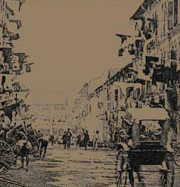
|
|
- Roosevelt Era and WWII, 1930-45
- Great Depression following stock market crash, 1929
- Led to Franklin D. Roosevelt's New Deal
- More acknowledgement of industry's social responsibility
- Led to realization that mutually beneficial relationships
must be built with responsible performance.
- The need to build informed public support for
New Deal reforms.
- Growth of positive, continuous public relations
programs.
- Growth in use of reliable social science to gauge
public opinion.
|
- World War II
- Office of War Information
- Roosevelt was reluctant -- WWI sullied propaganda.
- But learned must counter "distorted ideas."
- Growth of military public relations
- Brought paid advertising to fore as PR tool
- Propaganda more sophisticated?
|
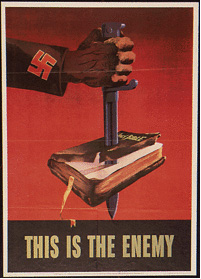
|
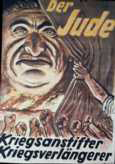
|
|
| 
|
- In Singapore, WWII
- Three-and-a-half years of occupation,
1942-45
- "My generation ... faced Japanese Occupation,
conquest, hardships, brutalities....
The younger generation...have had a relatively
quiet and placid life."
--Lee Kuan Yew
|
|
|
| Back to top
- Postwar Boom, 1945-1965
- Strong expansion for business, industry
- Improved standard of living.
- Transition to postindustrial, service-oriented
economy
- Expanding world trade and political conflict extend
public relations around the world.
- Advent of television
- Widespread impact on a more educated society
- Increase in demand for open government
- Professionalism
- PR education in colleges
|
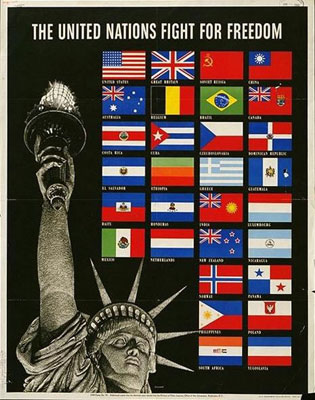
|
|
- In Singapore
- Organised public relations began.
- Under British military, Department of Publicity
and Printing
- Two years later, public relations department
under Colonial Secretary's Office

- Department of Information Services
- "Mental rehabilitation" of the people
(inculcate loyalty to British rule)
- Headed by George Thomson
- Father of public relations in Singapore
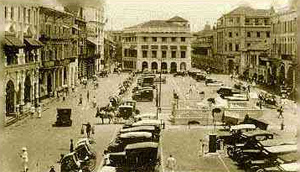
- With self-government in 1959, public relations reorganised
as Ministry of Culture
- Publicity Liaison Secretary and one other (?)
- One with Chinese sensibilities & publicity
expertise
- Other with Malay sensibilities & publicity
expertise
- "Instill in the people of all races the will
to be a nation."
- Coordination of various media resources: radio,
posters, films and publications.
- No policy authority: city desk for broadcasting
- Aim to promote racial cohesion and harmony
- Community centers, open air concerts, exhibitions,
talks, seminars and films
- In 1954, youth became priority public in battle
with Communism for hearts and minds.
|
The Cathay Building, opened in 1939, was the headquarters
for the British Malaya Broadcasting Corporation.
|
Back to top
|
- Global Information Age, 1965 on…
- Acceleration of computer technology.
- Multiplying channels of communication.
- Rise of consumerism.
- Transition to global economy, global information.
- Stressful: Public opinion grew suspicious of all major
institutions&endash;government; business; the media.
- Government affairs becomes a major PR task
- Issues management and management by objectives became
central to public relations.
|
|
|
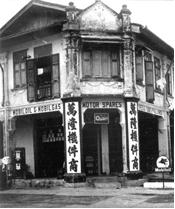
|
- In Singapore
- In 1960s Singapore developed into financial
centre.
- Government PR: Economic Development Board and
Singapore Tourist Promotion Board
- Planned PR activities on a global scale.
- Created booming tourist industry, increasing
presence of multinational corporations
- Sustained campaigns
- Anti-Litter

- Lungs for Singapore
- In late 60s, many international PR firms arrived
to service multinational corporations
- Aim was to keep Western shareholders informed.
- PR not aimed at local people
- No community relations or social responsibility.
|
|
- Concern for professionalism grew
- PR practitioners from agencies, multinationals,
hotels, banks and government organized.
- Institute of Public Relations of Singapore (IPRS)
born in 1970.
|

|
|
- In 1980, Ministry of Culture reorganised
- Ministry of Information, Communication and
the Arts
- Aim was to widen publicity and public relations
work.
- To improve quality and professionalism
of work.
- To effectively convey plans and policies
to an increasingly sophisticated public
and external audiences.
- Objectives the same: to rally people to build
a progressive, stable and prosperous society.
- Tactics changed to adapt to better-educated
and affluent public.
- Information seekers through mass media
- In public and private, PR became part of management.
|

|
|
- Four Models of Public Relations
- Press Agentry/Publicity (1850-1900)
- One-way communication
- P.T. Barnum
- Public Information (1900-1920)
- One-way communication
- Dissemination of truthful, accurate information
- Government model
- Ivy Ledbetter Lee
- Two-Way Asymmetric (1920 - 1940)
- Persuasion using social science
- Uses feedback to evaluate whether objective
met
- Edward L. Bernays
- Two-Way Symmetric (1960s - today)
- Gaining mutual understanding
- Balanced, two-way communication
- Using feedback, mediation to adjust policy
- James E. Grunig, Harwood Childs, Arthur
Page
|
|
Back to top
|
|

